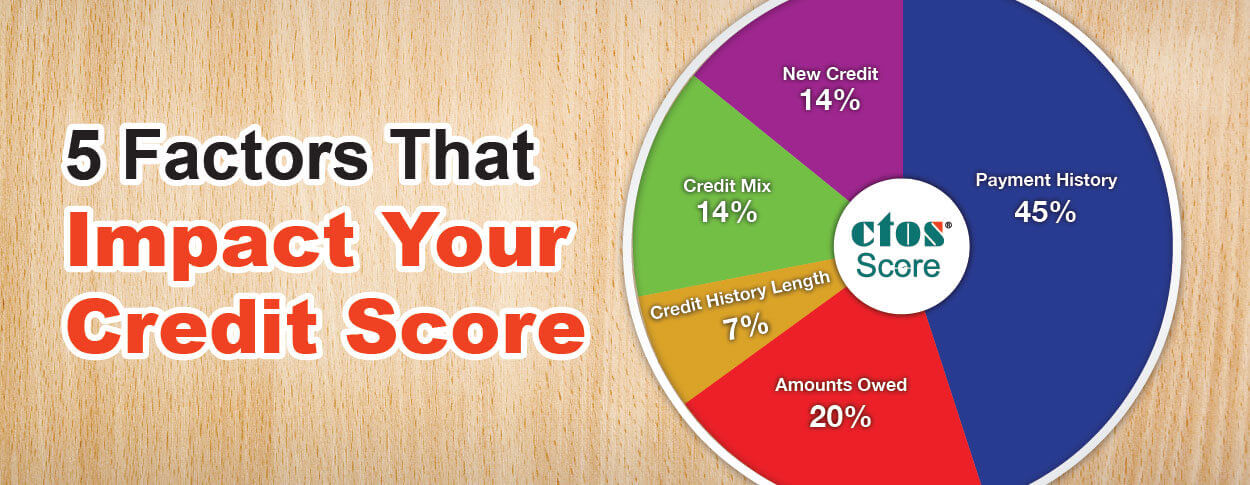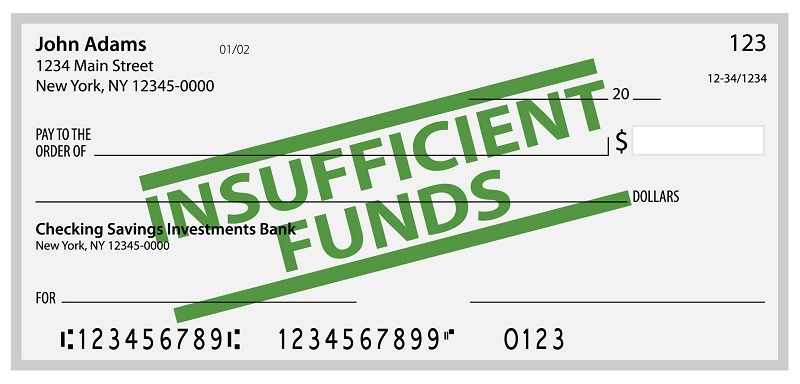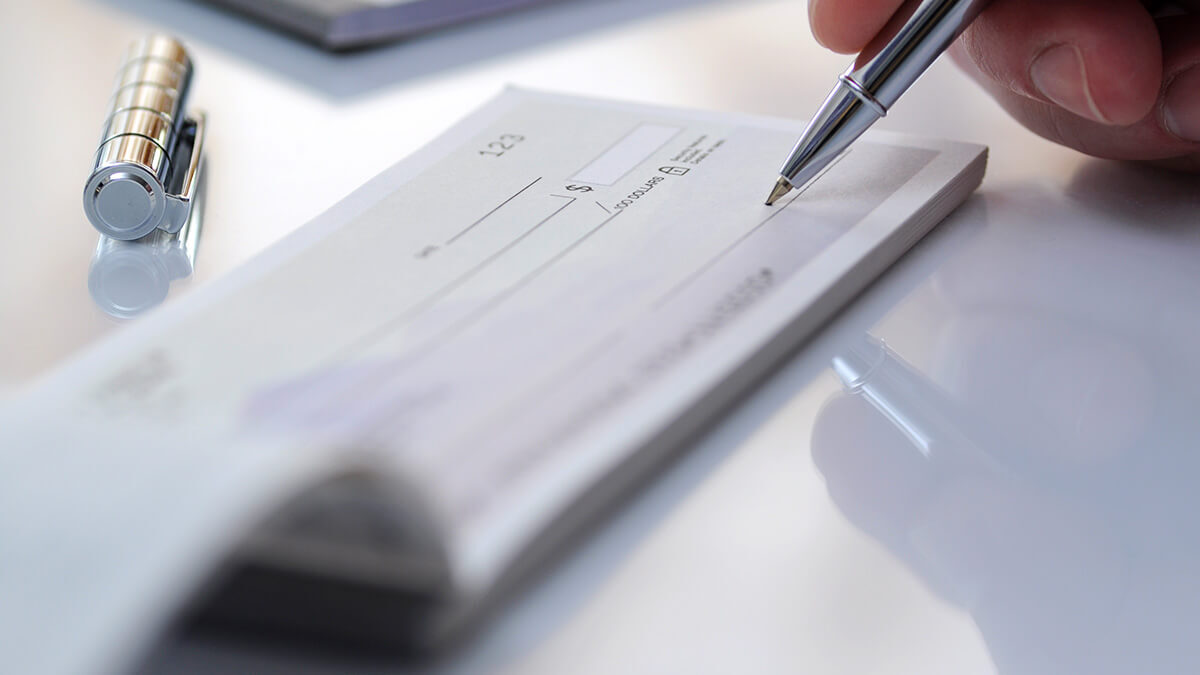The Risks of Insufficient Funds
A bounced check, also known as a returned check, occurs when a check is presented to a bank for payment, but the account holder’s balance is insufficient to cover the amount. This can happen due to various reasons, including incorrect account information, technical issues, or simply not having enough funds in the account. When a check bounces, it can lead to a series of consequences that can affect the account holder’s financial stability and credit score.
One of the primary reasons for a bounced check is insufficient funds. This can happen when an individual writes a check without verifying their account balance or when they have outstanding transactions that have not yet cleared. In such cases, the bank will return the check to the merchant, and the account holder will be notified. It is essential to understand that a bounced check can occur even if the account holder has sufficient funds in their account, but the funds are not yet available due to pending transactions or holds.
Another reason for a bounced check is incorrect account information. This can happen when the account holder provides incorrect account numbers, routing numbers, or other details. Technical issues, such as bank errors or system glitches, can also cause a check to bounce. In such cases, the account holder may not be at fault, but they will still be responsible for resolving the issue.
It is crucial to understand what happens if you bounce a check, as it
How to Avoid Bouncing a Check
To avoid bouncing a check, it is essential to take proactive steps to manage your finances effectively. One of the most effective ways to prevent bounced checks is to verify your account balance regularly. This can be done by checking your account online, through mobile banking, or by visiting your bank’s ATM. By knowing your account balance, you can avoid writing checks that exceed your available funds.
Another way to avoid bouncing a check is to use overdraft protection. This service allows you to link your checking account to a savings account or credit card, which can provide a backup source of funds in case of an overdraft. However, it is crucial to understand that overdraft protection may come with fees, so it is essential to review the terms and conditions before opting for this service.
Setting up low-balance alerts is also an effective way to prevent bounced checks. Most banks offer this service, which sends notifications to your phone or email when your account balance falls below a certain threshold. By receiving these alerts, you can take prompt action to deposit funds or transfer money from another account to avoid a bounced check.
Additionally, it is essential to keep track of your outstanding transactions, including checks, debit card transactions, and online payments. By monitoring your account activity, you can avoid writing checks that may bounce due to insufficient funds. It is also crucial to review your account statements regularly to ensure that all transactions are accurate and authorized.
By following these tips, you can minimize the risk of bouncing a check and avoid the associated fees and consequences. Remember, understanding what happens if you bounce a check is crucial to maintaining good financial health. In the next section, we will discuss the fees and charges associated with a bounced check.
The Fees and Charges Associated with a Bounced Check
When a check bounces, the account holder can incur various fees and charges. One of the most common fees is the Non-Sufficient Funds (NSF) fee, which can range from $20 to $35 per occurrence. This fee is charged by the bank for processing a check that exceeds the available balance in the account.
In addition to NSF fees, account holders may also incur overdraft fees if they have overdraft protection on their account. Overdraft fees can range from $20 to $40 per occurrence and are charged when the bank honors a transaction that exceeds the available balance in the account.
Merchant fees are another type of fee that can be incurred when a check bounces. Merchants may charge a fee for processing a bounced check, which can range from $20 to $50 per occurrence. This fee is typically passed on to the account holder, who is responsible for paying the merchant for the bounced check.
Other fees and charges that may be incurred when a check bounces include late fees, collection fees, and bank fees. Late fees can be charged if the account holder fails to pay the bounced check fee within a specified timeframe, while collection fees can be charged if the bank sends the account to a collections agency. Bank fees can include fees for processing the bounced check, as well as fees for any subsequent transactions that are affected by the bounced check.
It is essential to understand the fees and charges associated with a bounced check, as they can add up quickly and negatively impact the account holder’s financial situation. By understanding what happens if you bounce a check, account holders can take steps to avoid these fees and maintain good financial health. In the next section, we will discuss the impact of a bounced check on your credit score.
The Impact on Your Credit Score
A bounced check can have a negative impact on your credit score, which can affect your ability to obtain credit in the future. When a check bounces, the bank may report the incident to the credit bureaus, which can result in a negative mark on your credit report. This negative mark can lower your credit score and make it more difficult to obtain credit, loans, or other financial services.
The impact of a bounced check on your credit score can vary depending on the severity of the incident and the credit scoring model used. In general, a bounced check can result in a 50-100 point decrease in your credit score, which can be significant. Additionally, multiple bounced checks can have a cumulative effect on your credit score, leading to a more substantial decrease.
It is essential to resolve the issue of a bounced check promptly to minimize the impact on your credit score. This can involve contacting the bank, resolving the issue, and taking steps to prevent future occurrences. By resolving the issue quickly, you can minimize the damage to your credit score and maintain good financial health.
It is also important to note that a bounced check can remain on your credit report for up to seven years, which can continue to affect your credit score over time. Therefore, it is crucial to take steps to prevent bounced checks and maintain good financial habits to minimize the risk of negative marks on your credit report.
Understanding the impact of a bounced check on your credit score is crucial to maintaining good financial health. By taking steps to prevent bounced checks and resolving issues promptly, you can minimize the risk of negative marks on your credit report and maintain a healthy credit score. In the next section, we will discuss what to do if you’ve bounced a check.
What to Do If You’ve Bounced a Check
If you’ve bounced a check, it’s essential to take immediate action to resolve the issue and prevent further complications. The first step is to contact the merchant or the recipient of the check and inform them of the situation. This will help to prevent any further action from being taken, such as sending the check to a collections agency.
Next, you should contact your bank to resolve the issue. You may need to deposit additional funds into your account to cover the amount of the bounced check, plus any fees that may have been incurred. Your bank may also offer overdraft protection or other services to help prevent future bounced checks.
It’s also crucial to take steps to prevent future bounced checks. This can include verifying your account balance before writing a check, using overdraft protection, and setting up low-balance alerts. By taking these steps, you can minimize the risk of bouncing a check and avoid the associated fees and complications.
In addition to resolving the issue with your bank and the merchant, you should also review your financial situation to determine how you can prevent future bounced checks. This may involve creating a budget, tracking your expenses, and making adjustments to your spending habits.
Understanding what happens if you bounce a check is crucial to taking the right steps to resolve the issue and prevent future complications. By taking immediate action and making adjustments to your financial habits, you can minimize the impact of a bounced check and maintain good financial health. In the next section, we will discuss alternative banking options that can help minimize the risk of bouncing a check.
Alternatives to Traditional Checking Accounts
Traditional checking accounts can be prone to bounced checks, especially if you’re not careful with your account balance. However, there are alternative banking options that can help minimize the risk of bouncing a check. One such option is a prepaid debit card.
A prepaid debit card is a type of card that is loaded with a specific amount of funds, which can be used to make purchases or pay bills. Since the card is prepaid, you can’t spend more than the amount loaded on the card, which eliminates the risk of bouncing a check. Additionally, prepaid debit cards often come with features such as low-balance alerts and transaction tracking, which can help you stay on top of your finances.
Another alternative to traditional checking accounts is online banking services. Online banking services allow you to manage your finances online, including checking your account balance, paying bills, and transferring funds. Many online banking services also offer features such as low-balance alerts and overdraft protection, which can help prevent bounced checks.
Mobile banking apps are also becoming increasingly popular, and can be a convenient alternative to traditional checking accounts. Mobile banking apps allow you to manage your finances on the go, including checking your account balance, paying bills, and transferring funds. Many mobile banking apps also offer features such as low-balance alerts and transaction tracking, which can help you stay on top of your finances.
By considering alternative banking options, you can minimize the risk of bouncing a check and maintain good financial health. In the next section, we will discuss the consumer protection laws and regulations that govern bounced checks.
Understanding Your Rights as a Consumer
As a consumer, it’s essential to understand your rights when it comes to bounced checks. The Electronic Fund Transfer Act (EFTA) and the Expedited Funds Availability Act (EFAA) are two federal laws that govern bounced checks and provide protections for consumers.
The EFTA requires financial institutions to provide consumers with certain disclosures and protections when it comes to electronic fund transfers, including bounced checks. For example, financial institutions must provide consumers with a clear and conspicuous disclosure of the terms and conditions of the account, including any fees associated with bounced checks.
The EFAA, on the other hand, requires financial institutions to make funds available to consumers within a certain timeframe. For example, financial institutions must make funds available for withdrawal within one business day after the deposit is made, unless the deposit is made on a non-business day or is subject to a hold.
Additionally, the EFAA requires financial institutions to provide consumers with a notice of non-payment if a check is returned due to insufficient funds. This notice must include the reason for the non-payment and the amount of the check.
Understanding your rights as a consumer can help you navigate the complexities of bounced checks and ensure that you are treated fairly by financial institutions. By knowing your rights, you can take steps to protect yourself and avoid unnecessary fees and charges.
In the next section, we will discuss best practices for managing your finances effectively, including creating a budget, tracking expenses, and maintaining a healthy credit score.
Best Practices for Managing Your Finances
Managing your finances effectively is crucial to avoiding bounced checks and maintaining a healthy financial situation. One of the best practices for managing your finances is to create a budget. A budget helps you track your income and expenses, making it easier to identify areas where you can cut back and allocate your funds more efficiently.
Another best practice is to track your expenses. Keeping track of your expenses helps you stay on top of your spending habits and identify areas where you can make adjustments. You can use a budgeting app or spreadsheet to track your expenses and stay organized.
Maintaining a healthy credit score is also essential for managing your finances effectively. A good credit score can help you qualify for loans and credit cards with favorable interest rates, making it easier to manage your debt. You can maintain a healthy credit score by making on-time payments, keeping credit utilization low, and monitoring your credit report for errors.
Additionally, it’s essential to prioritize needs over wants when managing your finances. Make sure to prioritize essential expenses such as rent/mortgage, utilities, and groceries over discretionary expenses such as dining out or entertainment.
By following these best practices, you can manage your finances effectively and avoid bounced checks. Remember, managing your finances is an ongoing process that requires regular monitoring and adjustments. By staying on top of your finances, you can maintain a healthy financial situation and achieve your long-term financial goals.






